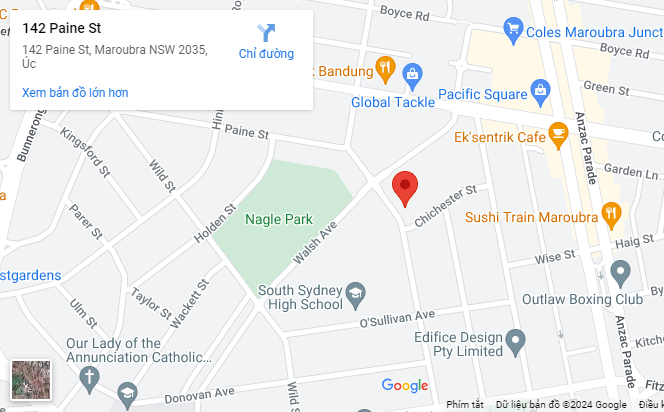When building or renovating a home, customization is key to creating a space that truly reflects your style and suits your family’s needs. One important element to consider is your house cladding, and there’s a world of options beyond the traditional brick or weatherboard.
Modern home designs often blend different materials for a striking facade. You can mix face bricks with composite cladding, timber, cultured stone, or even steel to achieve a unique look. These materials all belong to the versatile world of cladding, offering endless possibilities for your home’s exterior.
I. Key Considerations Before Updating Your House Cladding
Updating your home’s cladding is a significant project that can transform its look and performance. Before diving in, here are some essential points to consider:
Approval and Regulations: Exterior changes typically require development approval, so check with your local council and relevant authorities to ensure compliance. In rural areas, strict fire regulations might also limit cladding material choices, impacting your house design options.
Get Expert Input and Quotes: Consulting with builders and securing at least two or three quotes for materials and installation will help you budget effectively. Visiting display centers can also give you a clearer vision of how various cladding options will appear on a larger scale for your house.
Consider Insulation: When re-cladding, explore insulation options to boost your house design’s thermal efficiency, creating a comfortable space year-round.
Carefully planning these steps will make your cladding update smooth and ensure your home is both stylish and functional.
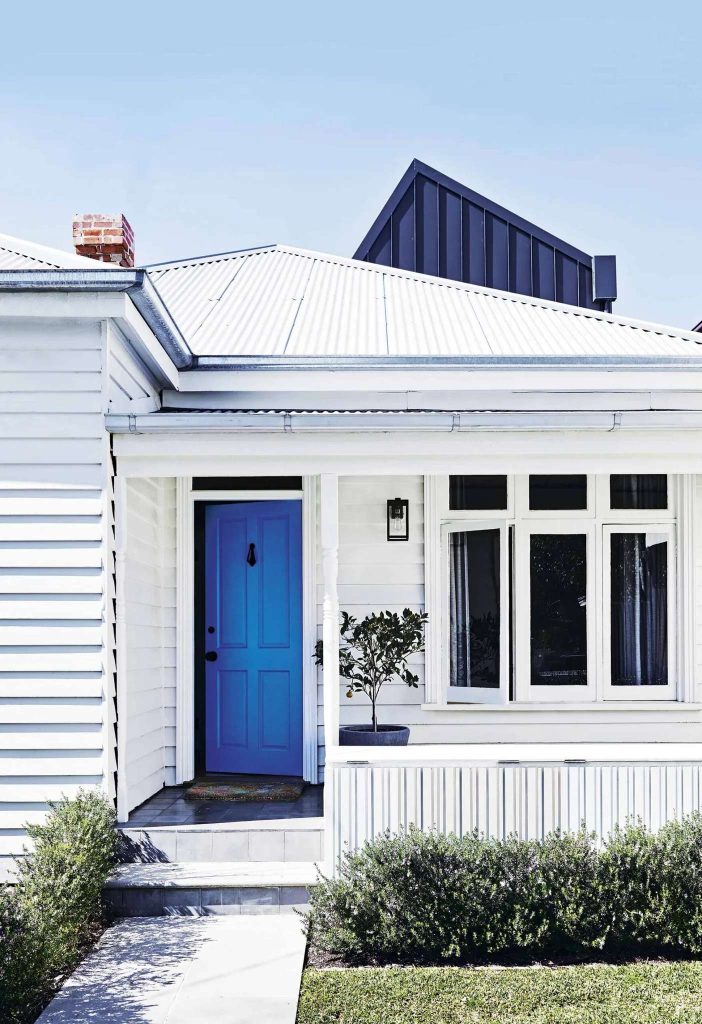
(Photography: Lisa Cohen)
II. 5 Stylish House Cladding Materials in Australia
1. Timber Weatherboard Cladding
Timber weatherboards are a popular choice for first-floor additions or rear extensions, offering a classic look that’s readily available. However, they do require regular maintenance and painting, which can add to ongoing costs.
If you’re considering weatherboards, it’s worth exploring alternative materials as well. James Hardie, for instance, offers a ‘Primeline’ range with pre-primed, site-painted fibre cement weatherboards. Composite weatherboards, made from a blend of wood and synthetic materials, are also available and offer added durability, much like composite floorboards.
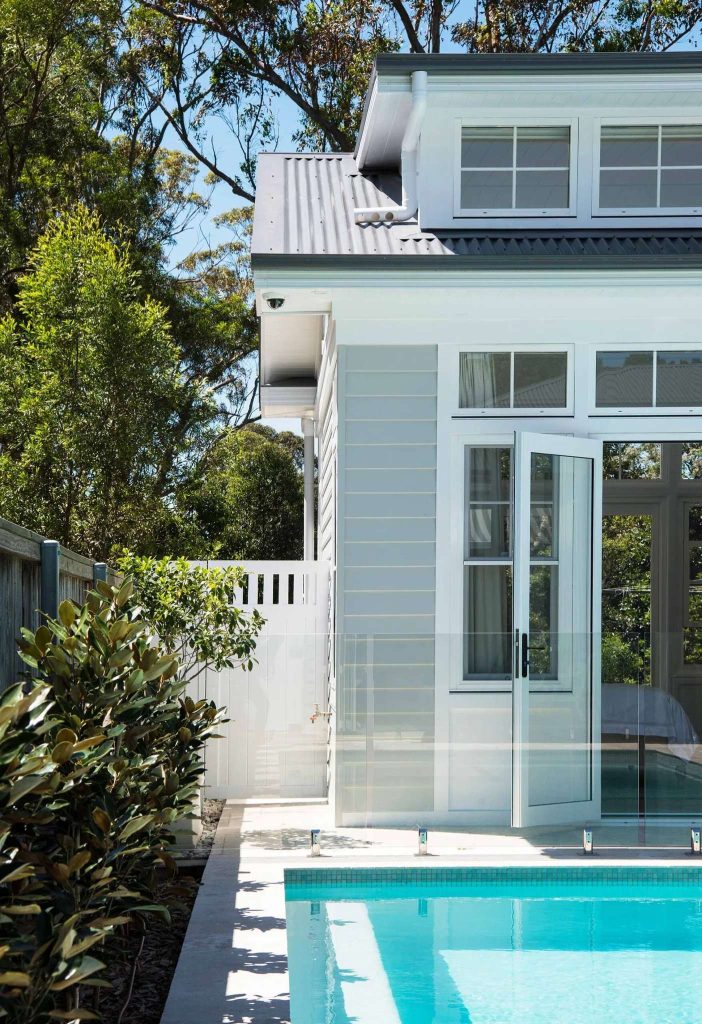
(Picture: James Hardie)
2. Fibre Cement Cladding
Modern fibre cement cladding offers a variety of styles, from vertical or horizontal boards to sleek, large panels. Known for its durability and low-maintenance appeal, this material resists water and fire damage, with minimal risk of condensation—making it a reliable choice for Australian homes.
Pre-primed boards are popular for their classic charm, while options like James Hardie’s ‘Matrix’ panels bring a minimalist, contemporary aesthetic that suits modern designs perfectly.
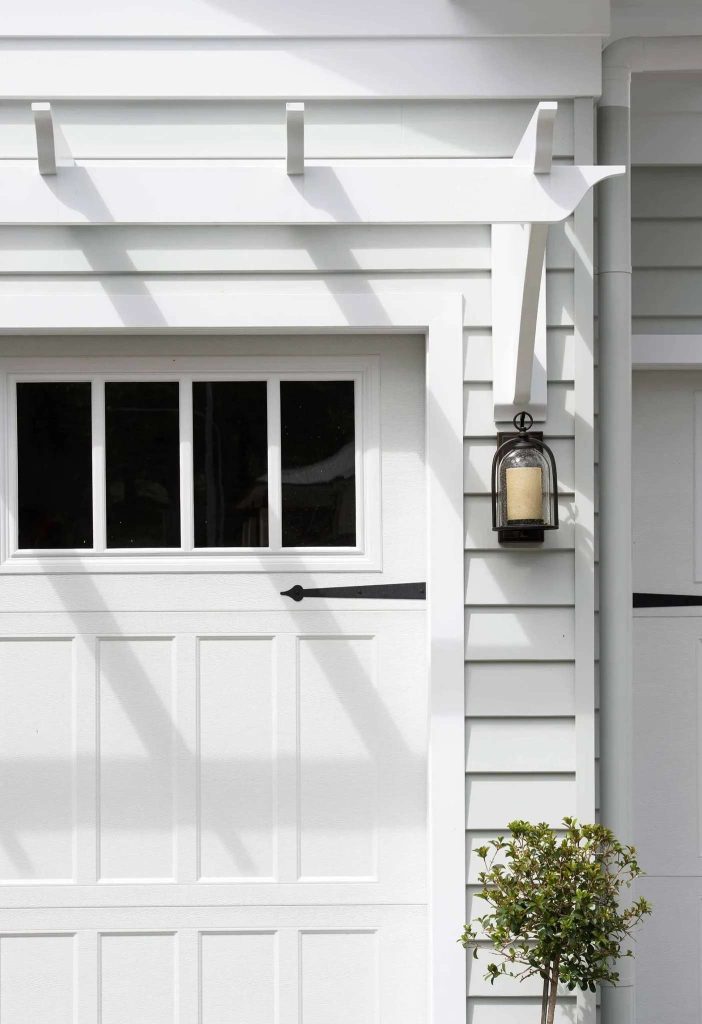
(Picture: James Hardie)
3. Stone Cladding
Stone cladding has made a stylish comeback in modern house design, adding natural elegance to exteriors. Cultured stone is especially popular as a feature material, often seen on porches, outdoor fireplaces, or striking feature walls.
With options available for a range of budgets, you can achieve the rich color, intricate patterns, and unique texture of natural stone without the high cost. From rustic to contemporary, there’s a stone cladding style to complement nearly any house aesthetic.
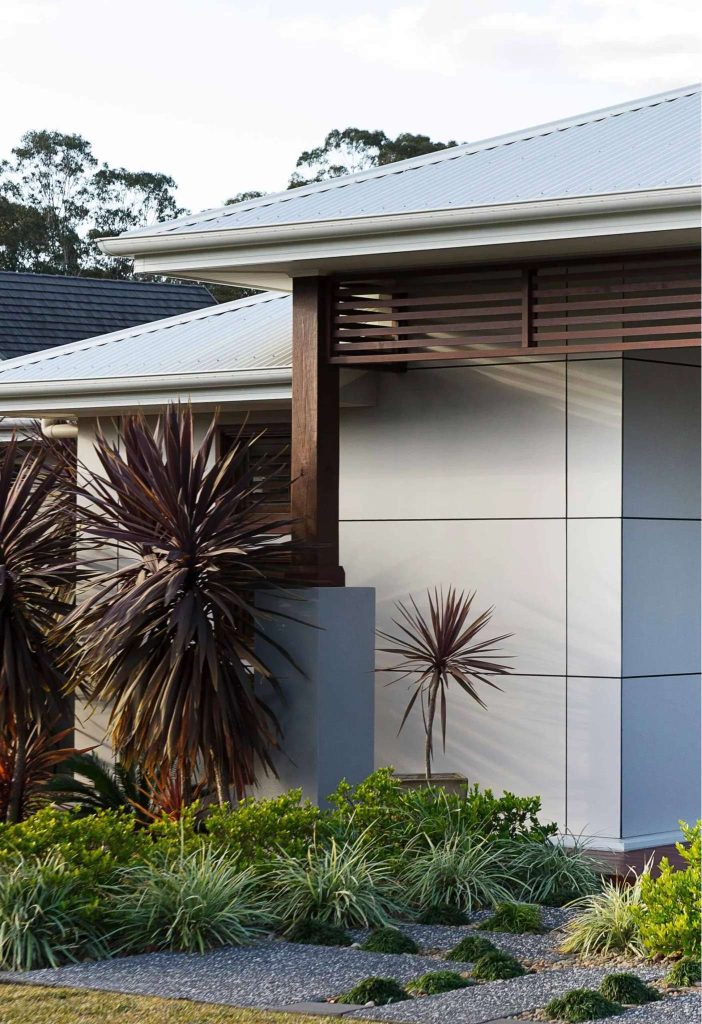
(Picture: James Hardie)
4. Metal Cladding
Colorbond panels are gaining popularity as a cladding option, frequently paired with brick or weatherboard at ground level to create a striking look.
Ideal for modern, box-like extensions, metal cladding is often specified in bold shades like black. When thoughtfully integrated, it creates a dramatic contrast that beautifully delineates between old and new, especially in rear extensions, making it a showstopping feature.
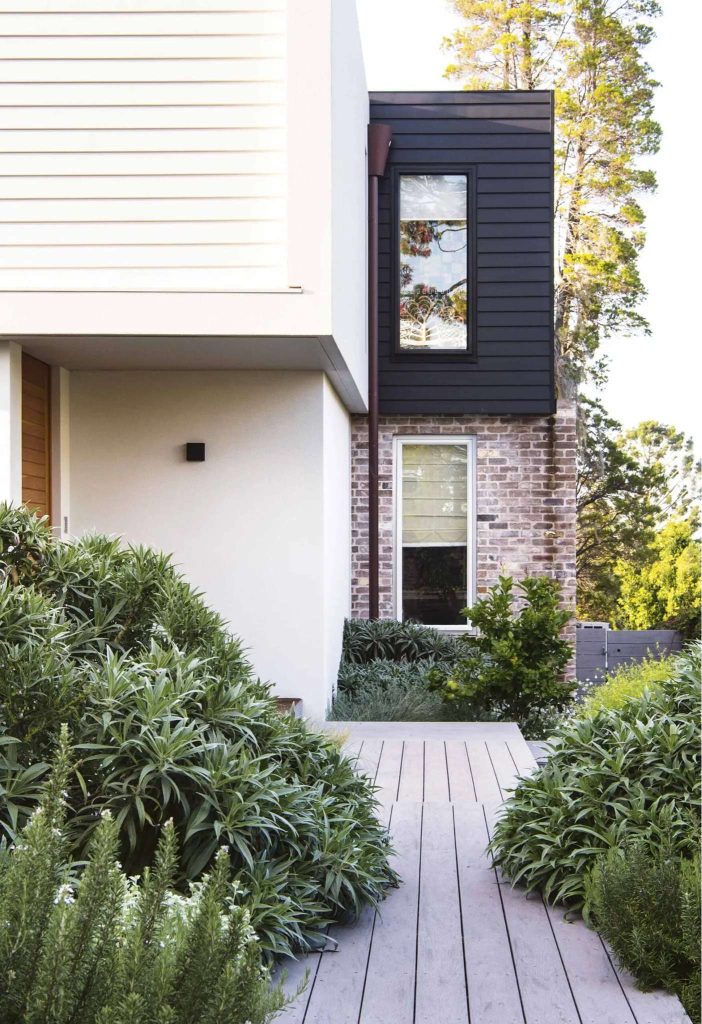
(Photography: Brigid Arnott)
5. Brick Cladding
Brick remains Australia’s top choice for house design exteriors, especially for new builds. However, it’s often combined with fibre cement or weatherboard for eye-catching first-floor additions.
Recent trends favor darker brick hues, echoing Australia’s love for grey tones, while slimmer profiles—like linear and split styles—are also on the rise. Paler greys, perfect for a Scandi-inspired look, are increasingly popular as well.
While smooth finishes are still widely sought-after, inner-city houses are embracing a more artisanal, textured brick look, adding an industrial edge to urban exteriors.
(Compiled from Homestolove magazine)
